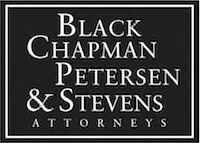Your testimony is probably critical to the outcome of your patient’s injury case. How best to communicate to the jury what you know about your patient’s injury and its effects? To insure a memorable and convincing presentation, keep in mind the old adage that “a picture is worth a thousand words” and recall the value of visual aids to effective education.
JURORS ARE STUDENTS
Jurors, for all intents and purposes, are students in your classroom. Put yourself in their shoes. You (the juror) are a bit stressed and tired because being called for jury duty has interrupted your normal routine. Your mind is weary and confused from all the unfamiliar legal jargon flying around. More likely than not, you and your fellow jurors have no more than a college education, if that. Some may have been lucky to get through high school. In short, it’s going to be tough to follow a lot of scientific medical terms, especially if the doctor’s presentation is late in the day.
Jurors are willing and wanting to perform their civic duty, but many factors conspire against optimal alertness. How do you keep the students in your class awake and on-track with what you are explaining?
First, it helps to explain the injuries as you would to an average patient. Forget that you are answering the questions of an attorney who may understand medical terminology. Explain the patient history, tests, exams, and diagnoses in plain language anyone can understand avoid latin terms.
VISUAL AIDS
Come prepared with pictures, anatomical drawings, flip charts, models of the body parts injured or a white board with colored pens. Help the jury grasp fully the significance of your patient’s’ injury with visual aids illustrating your patient’s injury. This type of aid personalizes the injury for jurors since we all have these body parts in common.
The opposing attorney may object to your use of visual aids. Your patient’s counsel should respond that these are not “exhibits.” That is, your aids are not being offered as evidence in and of themselves. Rather, they are to assist and aid you in giving your testimony. As such, the judge will usually allow them, as long as they accurately illustrate your testimony.
Use your pictures or models to illustrate any medical terms you need to use. Also use this type of evidence to explain why or how your patient’s complaints/limitations are medically probable and related to the mechanics of the trauma.
FOUNDATIONAL QUESTIONS You should be aware of the significance of the types of questions your patient’s attorney will ask you. Some of the initial questions attorneys ask you may seem irrelevant or even ignorant. (“Why is he asking me about my qualifications?” You may ask yourself, “Am I not here as a medical witness? Would I be here if I were not qualified?”) Don’t take offense. These are called foundational questions. It is essential that an attorney establish on the record your capability to answer questions of a technical nature, to give “expert” testimony. Such questions are required for the proper presentation of your testimony.
If no foundational questions are asked, the opposing attorney may properly object that no proper foundation has been set for a particular line of questioning. The opposing attorney will object that there is no way of knowing that you as a witness have the capacity to testify with a reasonable degree of medical probability that this type of an incident could produce these injuries, or these injuries could require this type of treatment.
Another foundational question may be, “Are you familiar with the amounts being charged in your community” for certain medical procedures? This establishes a foundation for asking you questions about whether fees charged for medical services performed were reasonable and necessary. It lets the jury (and the other side) know that you are in a position to give certain types of testimony since you have adequate knowledge on which to base an opinion. A quick review of the billing summary provided by your patient’s attorney in a pre-testimony meeting with you can give you the support you need to easily respond to this area of questions.
MEDICAL PROBABILITY, NOT CERTAINTY, IS ALL THAT’S REQUIRED
As a scientist and a medical professional you are probably accustomed to looking for a high degree of certainty before giving a diagnosis or administering treatment. You want to be quite sure before you speak or act, since what you say or do impacts the well-being of your patients.
In a legal case when asked for your opinion as a medical witness, you need not be absolutely certain. For example, when asked concerning the relationship between your patient’s injury and particular consequences, you will be asked to state your medical opinion with likelihood or probability:
“Doctor, in your opinion is it reasonably probable that the pain and limitation of movement that Mary experiences to this day resulted from the low back injury she suffered in her motor vehicle accident on July 27th, 1999?”
“Are the opinions you are giving today, given with a reasonable degree of medical probability?”
Certainty is not required in the courtroom. But if your opinion is strong that your patient was hurt as the patient claims, you can add that the client’s history and findings fully support your conclusions and that there is not reason to doubt your opinions.
To communicate effectively to the jury, enhance your presentation with simple explanations and visual aids. To work effectively with your patient’s attorney, 1) be prepared for foundational questions, and 2) realize that you will be asked to state your opinion with probability, not certainty.
If you have questions about the trial, do not hesitate to contact your patient’s attorney. Knowing what is expected of you will help give your patient the best chance of a fair and just result in the courtroom.
This article was prepared by Robert L. Chapman
